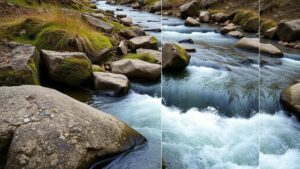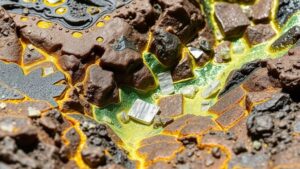How to Identify Silver Deposits in Hydrothermal Breccias
How to Identify Silver Deposits in Hydrothermal Breccias
Hydrothermal breccias are unique geological formations that can contain significant mineral deposits, including silver. Understanding how to identify silver deposits in these structures is crucial for geologists and mining professionals. This article provides insight into identifying silver within hydrothermal breccias, techniques used for exploration, and real-world applications.
Understanding Hydrothermal Breccias
Hydrothermal breccias result from the fragmentation of rock due to hydrothermal processes, which involve hot, mineral-rich fluids circulating through the Earths crust. e breccias can form in various geological settings and often indicate the presence of valuable minerals, including silver. The process typically occurs in volcanic areas or near tectonic boundaries, where geological heat facilitates the movement of mineral-laden fluids.
Key Indicators of Silver Deposits
Identifying silver deposits within hydrothermal breccias involves examining several geological and mineralogical indicators:
- Mineral Assemblage: Silver typically occurs with other minerals such as quartz, calcite, and sulfides. The presence of these minerals can indicate a potential silver-bearing environment.
- Texture and Structure: The texture of the breccia can provide clues about the deposition process. Breccias with a coarse texture may indicate a high-energy environment conducive to mineral concentration.
- Alteration Patterns: Hydrothermal alteration, such as argillic or sericitic alteration, can suggest the presence of silver. A careful study of these alteration zones can help in locating potential deposits.
Geochemical Analysis
Geochemical analysis is a critical tool in identifying silver deposits. By analyzing rock samples from hydrothermal breccias, geologists can determine the concentration of silver and associated elements.
- Highlighted Techniques:
- ICP-MS: Inductively Coupled Plasma Mass Spectrometry (ICP-MS) is often employed to detect trace elements within samples, allowing for the identification of silver concentrations.
- Fire Assay: This traditional method is specifically designed to quantify precious metals in mineral samples and is particularly effective for silver.
- Field Sampling: Collecting samples across various locations within the breccia body can provide a comprehensive picture of the silver distribution.
Case Studies: Successful Silver Exploration
To illustrate the practical application of these methods, we can look at successful case studies:
- Case Study: The Fresnillo District, Mexico
The Fresnillo district is known for its rich silver deposits found in hydrothermal breccias. Detailed geological mapping and geochemical sampling revealed significant silver concentrations associated with specific breccia types. - Case Study: The Silver Valley, Idaho
In the Silver Valley, exploration focused on hydrothermal alteration zones where silver-rich breccias have been extensively mined. Techniques including geophysical surveys and sampling revealed localized high-grade silver deposits.
Field Techniques for Identification
Field exploration plays a vital role in identifying silver deposits. Effective strategies include:
- Mapping and Geophysical Surveys: Employing geophysical methods can help establish subsurface geology and identify potential mineralization zones.
- Identification of Surface Indicators: Look for surface indicators such as gossans or changes in vegetation, which can suggest underlying mineralization.
Challenges in Identification
While identifying silver in hydrothermal breccias can be rewarding, it is not without challenges. e include:
- Complex Geology: The highly variable nature of hydrothermal systems can lead to difficulties in predicting mineral distribution.
- Sample Contamination: Ensuring accurate sample collection and analysis is essential, as contamination can mislead geochemical results.
Actionable Takeaways
To wrap up, identifying silver deposits in hydrothermal breccias requires a methodical approach combining geological knowledge and modern analytical techniques. Key steps include:
- Understand the geological setting of hydrothermal breccias.
- Focus on mineral assemblage, texture, and alteration patterns.
- Use geochemical analysis techniques like ICP-MS and fire assays.
- Learn from successful case studies and adapt field techniques accordingly.
With patience and rigor in exploration, the potential for discovering valuable silver deposits in hydrothermal breccias remains significant, offering promising prospects for mining operations.



